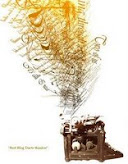Awhile back I read a book that talked about the way museums have changed over the centuries. I was thinking about how differently museums are set up today than they were in the 1700s. I found it interesting and thought I would share the information with you.
Before the 1800s, museums were places where wealthy people could go to look at art. These wealthy people thought of workers as dirty and noisy. They certainly didn’t want dirty, noisy people ruining their trips to the museum. Because of this, museums were only open when workers would be working. They also had dress codes that made sure that workers wouldn’t be able to afford the right clothing to visit.
Paintings were hung from floor to ceiling, in no particular order. There were no identification cards to give visitors information about the paintings. Even if a worker were somehow able to visit a museum, he would have no idea what he was looking at.
In 1803, the King of France decided that everyone should be able to visit museums. He wanted museums to help educate people. On his orders, the Louvre stopped enforcing its dress code and changed its hours so that workers could visit. The museum also began to arrange its artwork into exhibits which included informational cards. At first, the paintings were arranged into only four categories: Dutch, French, Flemish, and Italian. Over time the exhibits became more and more specific.
Today, paintings are hung only at eye level and every painting has its own informational card. Sometimes you can receive more information about a painting by listening to an audio tour. Many museums even offer guided tours. There are often events and activities designed to help kids understand the artwork they see. Museums truly do try to educate their visitors about art.
Return to main page.
Wednesday, August 13, 2008
Subscribe to:
Post Comments (Atom)








No comments:
Post a Comment